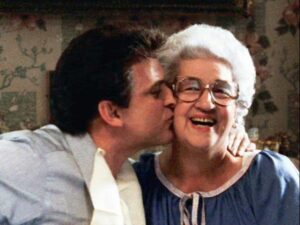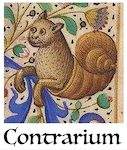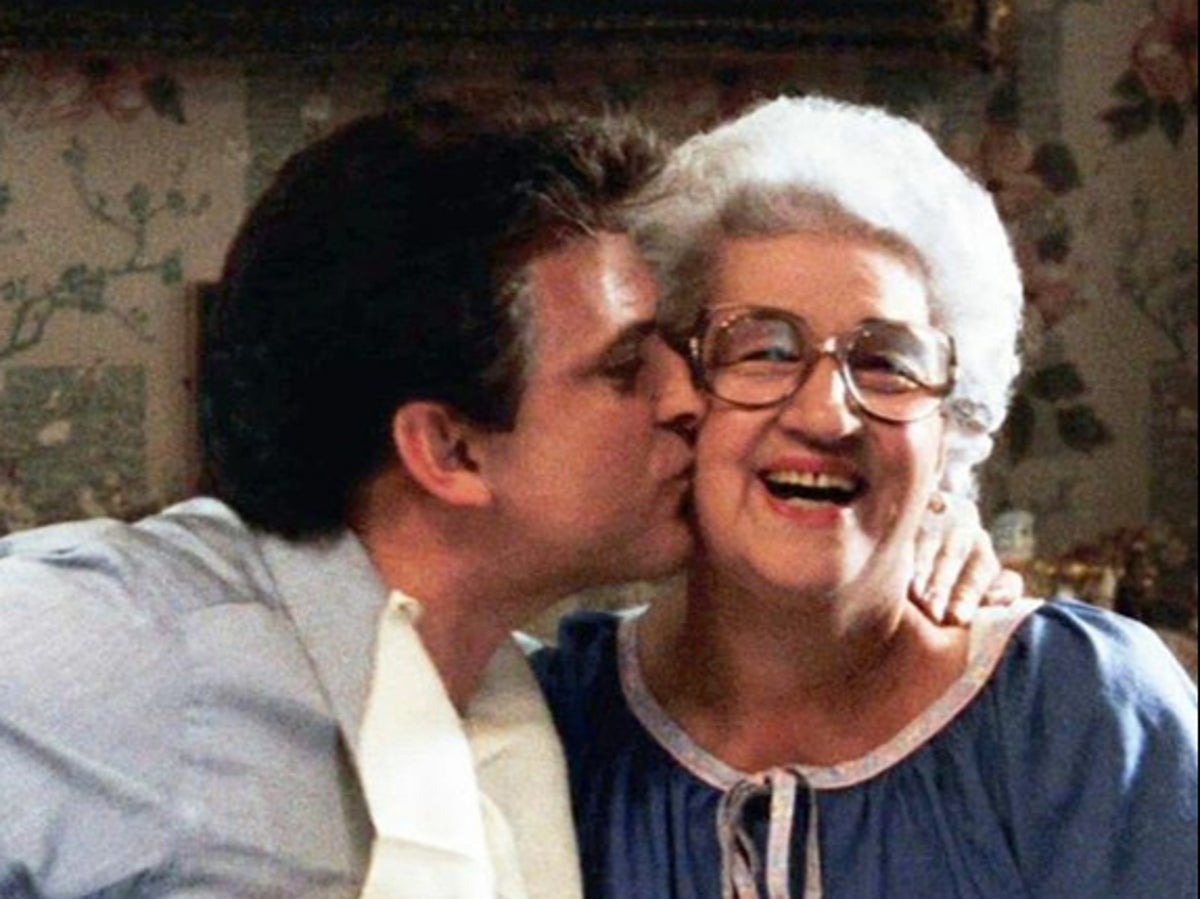Scorsese’s mom
And other immigration stories
You might remember Scorsese’s mother from the hilarious dinner scene in “Goodfellas”, shown below, where she plays Joe Pesci’s mother. That’s Scorsese’s real mom, and she’s amazing. She also plays a small part in “Casino”. (I didn’t realize it before, but Scorsese’s father also has a brief cameo in “Goodfellas”, as Vinnie, a prisoner cooking tomato sauce.)
But if you want to see more of Scorsese’s parents, I recommend watching “Italianamerican”, which I just watched. It is a short documentary (less than 50 minutes long) made by Martin Scorsese in 1974 about his parents. Basically it’s just a home movie of him having dinner with his parents and asking them questions about their background.
Many people bitch and moan about massive immigration today — including me. But it is important to understand the differences between immigration back then and now. The Italians, while very poor at the beginning, worked hard to integrate and to improve their lives, and eventually their children and grandchildren became completely assimilated to the new way of life, and, in many ways, were more “American” than “Italian”.
My own grandparents had similar experiences. My great-grandmother came from Italy, only not from Sicily but from Lombardy, and to Argentina instead of to the U.S. But her parents were poor, illiterate peasants, who thought they would find a better life on the other side of the Atlantic. She arrived in Argentina when she was only 5. About a decade later, just 17, she was already married and working as a seamstress, and at 18 she had her first child. The second one, a year later, was my grandmother.
What is the difference with the current migration wave? Well, for one, the ones coming now are mostly non-white people migrating to white countries, so it’s a reverse process of colonization. Also, in the case of Europe, they are mostly Muslim, so it’s a different religion and culture which makes assimilation harder. In fact, considering the numbers, you might even ask — who is “assimilating” to whom, in the end?
Besides that, previous immigrants had to work very hard to survive and lived in dire conditions. Scorsese’s mother tells us in the movie that at one time they were 14 people living in a small apartment with three rooms — the mother, the father, the uncle, the aunt, a nephew, and nine children. And, occasionally, they even took paying boarders too.
Current immigrants, on the other hand, have paid apartments or hotel rooms and receive welfare and other benefits, which is the main reason they are resented. Germany pays billions of euros every year to host refugees. And why? The excuse is that they are needed because of a supposed shortage of workers, but with the economy shrinking and automation taking over many jobs, it is unclear if they are really needed. Besides, as mentioned, many don’t even work and resort to criminal activities instead.
On one hand, the powers that be tell us that the world is overpopulated and that we’re destroying the planet with climate change. On the other hand, they tell us that developed countries need to receive a lot more people from Africa, Latin America and the Middle East, which will consume more resources. It doesn’t make sense, and there is not even any attempt to hide the contradictions in the discourse. Because it’s all just based on lies, and the real objectives are clearly not the ones stated.
In any case, this is a separate issue, which is unrelated to Scorsese’s film, which talks about a different time — about an America, a New York that, like the Europe of old, does not really exist anymore. Seen today, it is a nostalgic movie about what was and what could have been.
Plus, Scorsese’s parents are so genuine and funny that you could watch them for hours. The film is so intimate, it is like you were having dinner with them too. Only, unfortunately, you can’t taste the food, which must be amazing. (However, Scorsese’s mom secret sauce recipe is described in the credits, you might try that).
I recommend watching this little gem of a documentary, which is, at least for now, fully available on YouTube.



It’s so true what you say about how much immigration has changed. I hail from peasant farming Ukrainians who, when they first arrived in Canada, often spent their first winter living in a hole in the ground (which they dug themselves, thank you very much). The current stories of migrants being put up in 4 star hotels in the UK really disgust me.
I try to remind myself that, as weaponized people, they are victims of another kind, but we ignore the criminal element among them at our peril.
Migration is always a complicated, touchy subject. But the current “refugee” scam is very different from earlier immigration waves, with many people being paid to do nothing, basically. Some, committing crimes. You see that in all major European capitals. But it’s also the fact that it is going in a reverse direction than before (not from Europe, but to Europe), and, as such, European people are slowly disappearing — not having babies and then being replaced by the newcomers.
Do you know what is going on with the Dutch government? It’s being reported that the leader of the country resigned because of “migration issues,” but I haven’t heard anything in the alt-media explaining the situation.
I saw only an article on the DS but haven’t looked into it. Apparently some disagreements about reducing or increasing migration.
I found this: https://www.euronews.com/2023/07/09/why-did-the-dutch-government-collapse
Apparently the PM wanted harsher proposals to curb migration, but other allied parties didn’t want it.
It’s also interesting that in Finland a minister had to resign for a similar issue: https://www.theguardian.com/world/2023/jun/30/far-right-finnish-minister-vilhelm-junnila-resigns-after-10-days-over-nazi-comments
So basically, it seems to be people who are against immigration that are being removed, not the opposite.